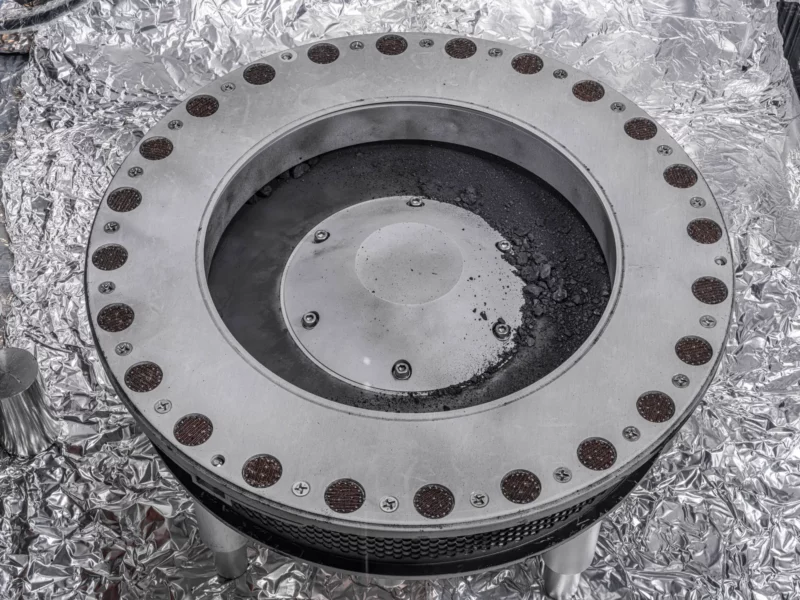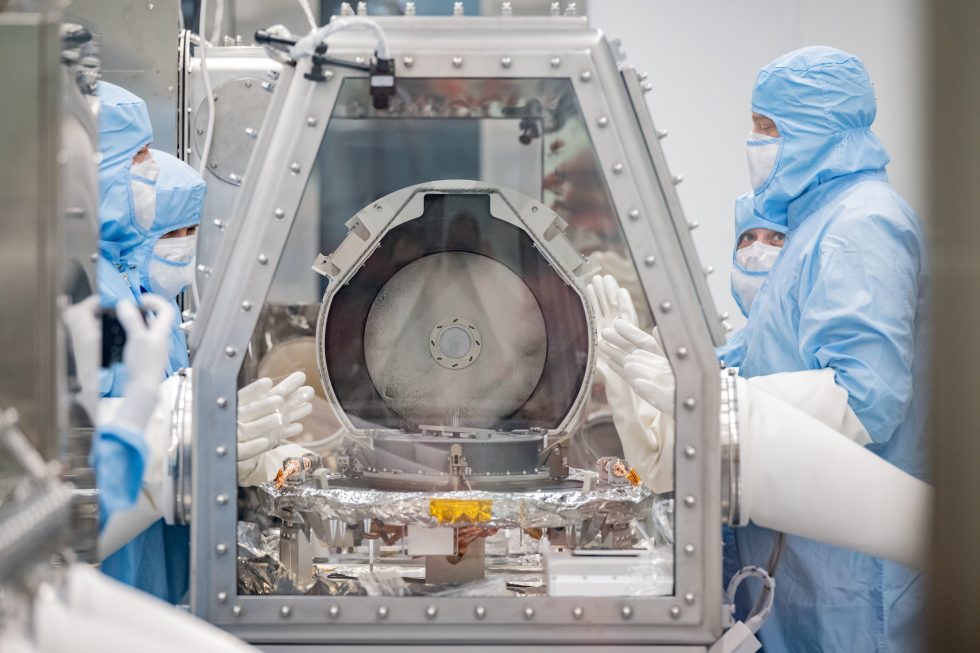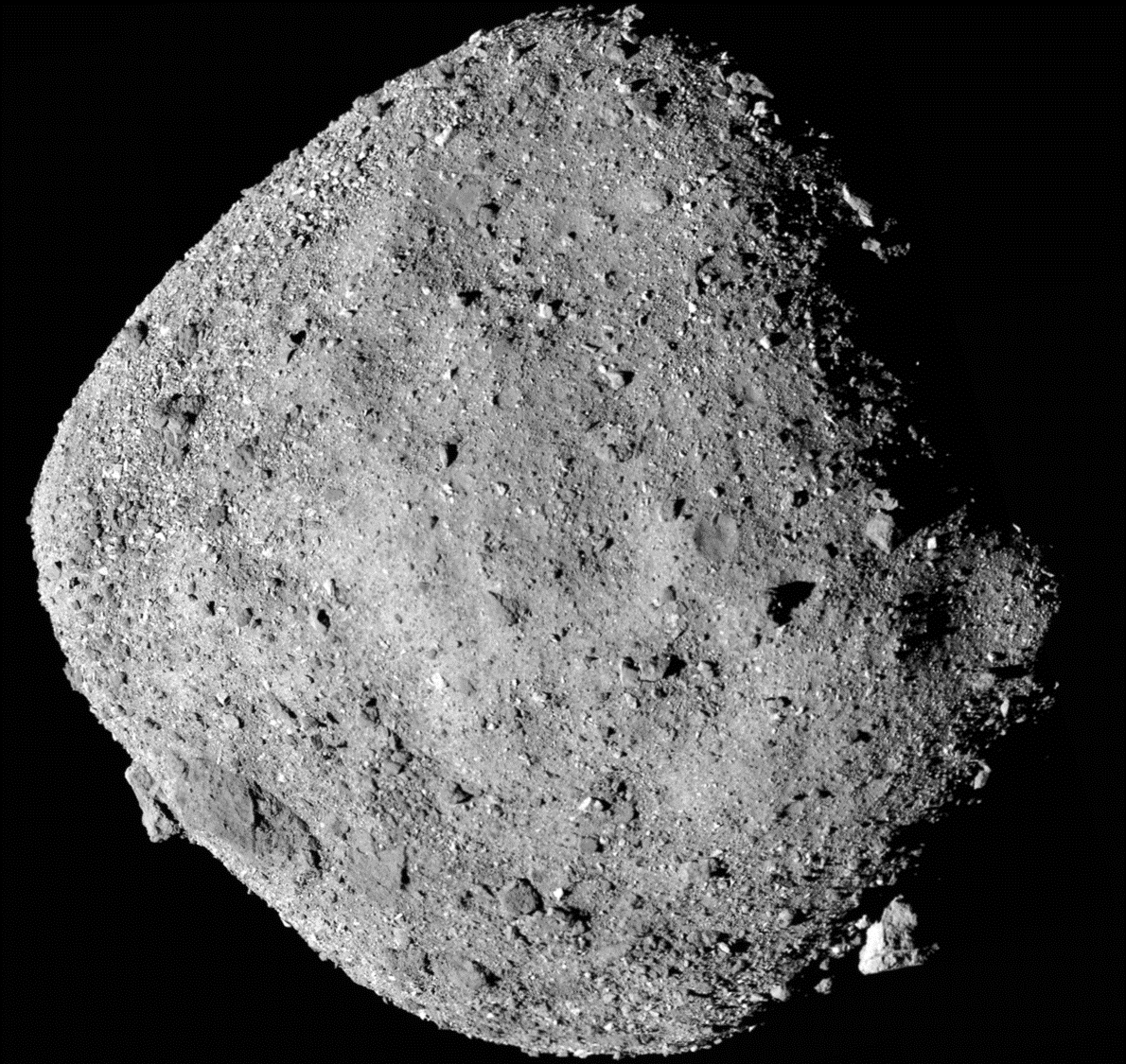
NASA unveils water and organics in interstellar asteroid sample—possible clues to origin of life
Share
After seven years in space, a small spacecraft carrying samples from the asteroid Bennu landed in a Utah desert in late September. Following carefully choreographed procedures to prevent the contamination of the asteroid dust and rocks from life on Earth, the samples were transferred to a clean room at Johnson Space Center in Houston two weeks ago. Since then, scientists have examined some of the material that was collected outside of the primary container to glean some initial insights. They revealed some of their first data during an event at the centre on Wednesday.
"Boy, did we really nail it," said Dante Lauretta, a scientist from the University of Arizona who is the principal investigator of the OSIRIS-REx mission.
Scientists have not even opened the main container yet, a process that will unfold in the coming weeks as cataloguing all of this material begins. Before the launch of this mission, scientists said the recovery of 60 grams of material would be considered a success. While the effort to determine the overall mass is ongoing, Lauretta said early estimates are that the asteroid capture mission collected about 250 grams of pebbles and dust from the surface of Bennu.

So what's the big deal about recovering pristine samples from the surface of an asteroid? The big deal is that Bennu, an asteroid in a near-Earth orbit that is about one-half kilometre across, is believed to be a time capsule for the types of rocks and chemicals that existed when the planets formed in our Solar System more than 4 billion years ago. By studying Bennu, scientists are looking back to that primordial era when Earth began transitioning from an extremely hot world with a hellish surface environment into something more like a mud ball.
Poking these pebbles and rocks with sophisticated equipment here on Earth may allow Lauretta and the other scientists to answer questions about how terrestrial planets like Earth and Mars formed and possibly whether asteroids seeded Earth with the building blocks for life.
In a preliminary analysis of some of the dust, Lauretta said scientists hit the jackpot with a sample that is nearly 5 percent carbon by mass and has abundant water in the form of hydrated clay minerals. It is highly plausible that asteroids like this delivered the vast majority of the water now found in Earth's oceans, lakes, and rivers billions of years ago.
By piecing together clues from the asteroid dust—both its water and organic molecules—the scientists believe they may better understand how Earth went from an uninhabited mudball to the world teeming with life today.

"This is incredible material," said Daniel Glavin, a co-investigator on the mission. "It’s loaded with organics. If we're looking for biologically essential organic molecules, we picked the right asteroid, and we brought back the right sample. This is an astrobiologist's dream."
Beyond exploring the origins of Earth and possibly life upon it, material from this mission will provide insight into other questions.
For example, NASA and some companies are interested in harvesting resources from asteroids to fuel human exploration deeper into the Solar System. A thorough investigation of Bennu will provide information about what resources exist in this type of carbon-rich asteroid and how difficult it will be to harvest and process them for fuel.
NASA, of course, is also interested in planetary defence. Bennu, as one of a small subset of asteroids that have orbits outside the main asteroid belt between Mars and Jupiter, is of high interest because it might potentially intersect with Earth. According to scientists, there is a 1-in-2,700 chance that Bennu could strike Earth between now and September 2182.
Although Bennu is only about one-twentieth the size of the large asteroid that wiped out the dinosaurs nearly 70 million years ago, it is large enough to destroy multiple cities or cause a huge tsunami. Understanding the nature of Bennu will help scientists and engineers better understand how best to impact and change the orbit of threatening asteroids in the future.
The world is awash in bad news at this moment, with terrible conflicts in Ukraine and Israel capturing much of the international discussion. But the story of asteroid retrieval is a positive one. NASA has worked closely with space agencies in Japan and Canada on the mission and partnered with scientists in dozens of countries to study the material brought back. Such an effort unites humanity rather than dividing it.

"Why are we doing this?" the NASA Administrator, Bill Nelson, asked rhetorically on Wednesday. "Because at NASA, we are trying to find out who we are, what we are, where we came from, what our place is in this vastness we call the Universe."
This is not the first mission to return samples from an asteroid. The Japanese space agency has led in this area. Its small Hayabusa 1 spacecraft returned 1,500 tiny asteroid grains to Earth in 2010, and a decade later, the Hayabusa 2 spacecraft returned more, about 5 grams, to Earth.
But the material from OSIRIS-Rex is many times more plentiful, and with larger rocks embedded within the sample, will likely provide more meaningful scientific data. The wonder of OSIRIS-Rex is that we still don't know what we're going to find, but we are at the tantalizing moment of inquiry when we can be sure that we're going to be dazzled by those discoveries in the coming months and years.
What I find most inspiring about big science missions like this is that they show what humanity, at its best, can be. It takes broad international cooperation, and a coming together of people from many different backgrounds and specialties, to do something that individuals cannot do alone—reaching far beyond the cradle of our civilization to find out something new about our cosmos, our world, and ourselves.
If we work together, we can do great things. If we work together, the future of our species is limitless.
You’ve come this far…
Why not venture a little further into A.S.S. - our exclusive Australian Space Society.
And keep thrusting Australia into the deep unknown…
#Space_Aus




